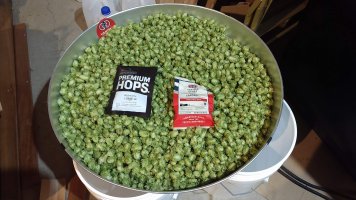...which is one year. If my kegerator dies after more than a year, I'm SOL. If your keezer dies after more than a year, you're equally SOL. Nobody's repairing residential chest freezers, any more than they're repairing residential mini-fridges. Will morebeer.com (who effectively are Komos) replace a unit that dies within a year? I'd expect so, but I hope to not learn from personal experience. But all your talk about warranty only matters for the first year after purchase; after that, the warranty's gone, both for you and for me. You and I both expect that our respective products will last well over a year, so the warranty's irrelevant.You can get a keezer from a real company with an American presence, like Frigidaire or Magic Chef, and they'll honor their warranty.
Does a keezer cost less? It can--but you're replacing some of that money with your labor in doing the conversion (which also means you can dress it up however you like, consistent with your budget, tools, and skill set). If you don't want your taps coming out the front--which I didn't--you can do that with a keezer too, but (1) say goodbye to that warranty you seem to value so much (since now you're cutting a hole in the lid); (2) you're looking at more work, and more money (now you need a tap tower), to do the conversion; and (3) you can't put it very close to a wall, because the tap tower would hit the wall when opening the lid.
Then, of course, there's the top-load vs. front-load issue. On the plus side for a keezer, you have ready access to all your kegs when you open the lid. On the minus side, you need to lift 50+-pound kegs 3+ feet in the air to load or unload them. I can do that, but I'd rather not.
If gas inside the unit is important to you, you could do that with the Komos as well. If you want to feed two gases into it, yep, you can do that too. Neither of those is important to me (at least at this time), so I'm not doing them. I like that the Komos has a clean way to feed gas in from the outside. I do use the bracket on the Komos, and since it's out of sight I don't much care what it looks like (though I don't think it's particularly unsightly).
I'm not saying that people shouldn't build keezers. That'd be a silly thing for me to say, because there are pros and cons to everything, and this is no exception. But it's no less silly to say that nobody should buy a kegerator




